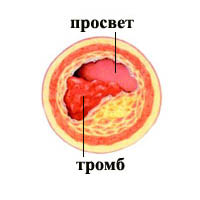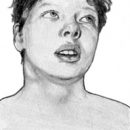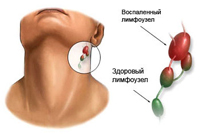The thromboembolism of the pulmonary artery occurs when the branches of the pulmonary artery thrombami. Conditions for the occurrence of pulmonary artery thromboembolism occur upon slowing down blood flow due to heart activities.
Content
Conditions for thrombo formation
 Light artery thromboembolism is the acute blockage of the branches of the pulmonary artery by blood closures formed in the Viennes of the Big Circulation Circulation.
Light artery thromboembolism is the acute blockage of the branches of the pulmonary artery by blood closures formed in the Viennes of the Big Circulation Circulation.
Most often, the cause of the thrombomembolism of the pulmonary artery is the thrombus arising in the deep veins and most often in the deep veins of the lower extremities. Significantly less often it is a thrombus from the veins pelvis, the cavity of the abdomen, the upper limbs, the right heart departments. Contribute to the formation of thromboms bed regime, especially in patients with diseases of the lungs, myocardial infarction, operations over the thigh fracture. And most often in patients with spinal cord damage. Occasionally thromboembolism of pulmonary arteries may occur in healthy people who are long in a forced position. For example, when flying by plane.
For the formation of thrombus it is necessary to have three conditions:
- Damage to the wall of the vessel
- Slow blood flow in this place
- Raising blood clotting
The wall of the vein can be damaged in inflammatory diseases, intravenous injections, injuries.
Conditions for slowing blood flow occur due to heart failure, long forced position (bedding, plaster bandage imposition).
The reasons for increasing blood coagulation are some hereditary disorders in the coagulation system of blood, the reception of oral contraceptives, AIDS. Increased risk of development of thromboms in people with a second group of blood, pregnant women, and obesity patients.
The most dangerous thrombus, which are attached by one end to the vessel wall, and the other, free, swims in the lumen of the vein. With a slight effort, for example, with a cough, a sharp movement, a fitting of thrombus is broken up with blood flow through a hollow vein, right atrium, the right ventricle falls into the pulmonary artery. Sometimes the thrombus breaks down, hitting the wall of the artery, and clogs the small branches of the lung veses.
The blockage of the branches of the pulmonary artery with a large number of blood clots leads to an increase in pressure in the vessels of the lungs. The load on the right ventricle increases and heart failure develops. The drop in the pump function of the right ventricle causes insufficient blood flow in the left ventricle, the amount of blood falls into the aorta and artery - there is a sharp drop in blood pressure and shock. All this may be accompanied by the myocardial infarction of the right ventricle, atelectasis (reshagation of a part of the lung fabric) in the lungs.
Eliments of the thromboembolism of the pulmonary artery
Depending on the volume of lesions of the vessels of the lungs, the thromboembolism of the pulmonary artery can be:
- Massive
- submassive
- Nemissive
The massive thromboembolism of the pulmonary artery is considered to be defeated by more than 50% of the vessels of the lungs, while the patient has loss of consciousness, shock, falling blood pressure, deficiency of the function of the right ventricle.
The submassive thromboembolism of the pulmonary artery is considered to be distressed from 30 to 50% of the lung vessels - in the patient's shortness of breath, normal blood pressure, the function of the right ventricle is violated to a lesser extent
Non-missive pulmonary artery thromboembolism is considered to be less than 30% and is accompanied by a breath, the function of the right ventricle does not suffer.
The manifestations of the thromboembolism of the pulmonary artery depend on the massiveness of the process, the state of the cardiovascular system and the lungs. The most frequent manifestation of pulmonal artery thromboembolism - shortness of breath and rapid breathing. Dyspnea arises suddenly. The patient better feels in the lying position. Pain in the chest has a different character.
The patient may have severe pain or discomfort in the chest. Occasionally hemochkalny occurs. Cyanosis may appear - the blue sinking of the nose, lips, ears or pallor. In the lungs, wheezing, over the region of the heart - pathological noise. Signs of acute pulmonary heart reflect on ECG. On the echocardiogram find blood clots in the right sections of the heart and pulmonary arteries, signs of violation of the function of the right ventricle. Radiographs detect changes in the lungs.









